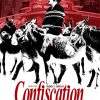Unlike a relational databases, document sources do not specify the structure of the info they store.
Rather, they allow the framework of the info to be identified by the content. This means that a document can be created with different set ups and data types, which usually is definitely not possible within a relational unit.
This overall flexibility allows data to be added, edited and removed without the effect on the present documents. This will make it easier to replace the structure in the data, and also enables the application easily question the new info.
A document-oriented repository is a sort of NoSQL databases that stores information inside CML, YAML, JSON or binary papers like BSON. Each doc has a exclusive key that identifies the information within it.
The first identifiers are indexed in the database to speed up retrieval. This allows the program to access data quickly and efficiently, lowering data dormancy and restoring performance.
These types of databases give you a number of advantages and trade-offs, it is therefore important to consider the demands of your certain business or organization before you choose a document-oriented database. The particular indexing alternatives, APIs or perhaps query ‘languages’ that are available and expected effectiveness will vary greatly depending on the particular implementation of a document-oriented databases.
The most popular document-oriented databases involve MongoDB, DynamoDB and https://iptech.one/the-most-expensive-gaming-pc/ CosmosDB. These database devices allow you to develop and alter data in a flexible way and so are designed for immediate development, superior scalability, and reduced upkeep costs.










Recent Comments